





























|
2017
Reading Group Selections
|
|
|
January
3, 2017

Frankenstein
by Mary Wollstonecraft Shelley
Frankenstein,
loved by many decades of readers and praised by such eminent
literary critics as Harold Bloom, seems hardly to need a recommendation.
If you haven't read it recently, though, you may not remember
the sweeping force of the prose, the grotesque, surreal imagery,
and the multilayered doppelgänger themes of Mary Shelley's
masterpiece. As fantasy writer Jane Yolen writes of this (the
reviewer's favorite) edition, "The strong black and whites
of the main text [illustrations] are dark and brooding, with
unremitting shadows and stark contrasts. But the central conversation
with the monster--who owes nothing to the overused movie image
… but is rather the novel's charnel-house composite--is
where [Barry] Moser's illustrations show their greatest power
... The viewer can all but smell the powerful stench of the
monster's breath as its words spill out across the page. Strong
book-making for one of the world's strongest and most remarkable
books."
SOURCE:
Copyright © Amazon.com. All rights reserved.
|
|
February
7, 2017
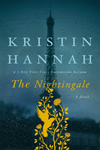
The
Nightingale
by Kristin Hannah
The
Amazon Spotlight Pick for February 2015: Kristin Hannah is
a popular thriller writer with legions of fans, but her latest
novel, The Nightingale, soars to new heights (sorry) and will
earn her even more ecstatic readers. Both a weeper and a thinker,
the book tells the story of two French sisters – one
in Paris, one in the countryside – during WWII; each
is crippled by the death of their beloved mother and cavalier
abandonment of their father; each plays a part in the French
underground; each finds a way to love and forgive. If this
sounds sudsy. . . well, it is, a little. . . but a melodrama
that combines historical accuracy (Hannah has said her inspiration
for Isabelle was the real life story of a woman who led downed
Allied soldiers on foot over the Pyrenees) and social/political
activism is a hard one to resist. Even better to keep you
turning pages: the central conceit works – the book is
narrated by one of the sisters in the present, though you
really don’t know until the very end which sister it
is. Fast-paced, detailed, and full of romance (both the sexual/interpersonal
kind and the larger, trickier romance of history and war),
this novel is destined to land (sorry, again) on the top of
best sellers lists and night tables everywhere. -- Sara Nelson
SOURCE:
Copyright © Amazon.com. All rights reserved.
|
|
March
7, 2017
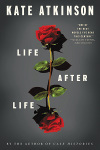
Life
After Life
by Kate Atkinson
An
Amazon Best Book of the Month, April 2013: Every time Ursula
Todd dies, she is born again. Each successive life is an iteration
on the last, and we see how Ursula's choices affect her, those
around her, and--so boldly--the fate of the 20th-century world.
Most impressive is how Kate Atkinson keeps the complexity
of her postmodern plotting so nimble. Life After Life approaches
the universe in both the micro- and macro sense, balancing
the interior lives of Ursula's friends and family with the
weight of two World Wars. (How many writers can make domestic
drama as compelling as the London Blitz?) Life After Life
is an extraordinary feat of narrative ambition, an audacious
genre-bender, and a work of literary genius. --Kevin Nguyen
SOURCE:
Copyright © Amazon.com. All rights reserved.
|
|
April
4, 2017

After
You
by Jojo Moyes
"Jojo
Moyes has a hit with AFTER YOU.”—USA Today
“The
genius of Moyes…[is that she] peers deftly into class
issues, social mores and complicated relationships that raise
as many questions as they answer. And yet, there is always
resolution. It's not always easy, it's not always perfect,
it's sometimes messy and not completely satisfying. But sometimes
it is.”—Bobbi Dumas, NPR
“Think
Elizabeth Bennet after Darcy's eventual death; Alice after
Gertrude; Wilbur after Charlotte. The 'aftermath' is a subject
most writers understandably avoid, but Moyes has tackled it
and given readers an affecting, even entertaining female adventure
tale about a broken heroine who ultimately rouses herself
and falls in love again, this time with the possibilities
in her own future.”–Maureen Corrigan, NPR
"Charming."
—People Magazine
“Like
its predecessor [Me Before You], After You is a comic and
breezy novel that also tackles bigger, more difficult subjects,
in this case grief and moving on… We all lose what we
love at some point, but in her poignant, funny way, Moyes
reminds us that even if it’s not always happy, there
is an ever after.” –Miami Herald
SOURCE:
Copyright © Publications Listed Above. All rights reserved.
|
|
May
2, 2017
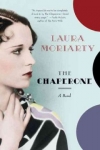
The
Chaperone
by Laura Moriarty
A
New York Times bestseller, The Chaperone is a captivating
novel about the woman who chaperoned an irreverent Louise
Brooks to New York City in the 1920s and the summer that would
change them both.
Only a few years before becoming a famous silent-film star
and an icon of her generation, a fifteen-year-old Louise Brooks
leaves Wichita, Kansas, to study with the prestigious Denishawn
School of Dancing in New York. Much to her annoyance, she
is accompanied by a thirty-six-year-old chaperone, who is
neither mother nor friend. Cora Carlisle, a complicated but
traditional woman with her own reasons for making the trip,
has no idea what she’s in for. Young Louise, already
stunningly beautiful and sporting her famous black bob with
blunt bangs, is known for her arrogance and her lack of respect
for convention. Ultimately, the five weeks they spend together
will transform their lives forever.
For Cora, the city holds the promise of discovery that might
answer the question at the core of her being, and even as
she does her best to watch over Louise in this strange and
bustling place she embarks on a mission of her own. And while
what she finds isn’t what she anticipated, she is liberated
in a way she could not have imagined. Over the course of Cora’s
relationship with Louise, her eyes are opened to the promise
of the twentieth century and a new understanding of the possibilities
for being fully alive.
Drawing on the rich history of the 1920s, ’30s, and beyond—from
the orphan trains to Prohibition, flappers, and the onset
of the Great Depression to the burgeoning movement for equal
rights and new opportunities for women—Laura Moriarty’s
The Chaperone illustrates how rapidly everything, from fashion
and hemlines to values and attitudes, was changing at this
time and what a vast difference it all made for Louise Brooks,
Cora Carlisle, and others like them.
SOURCE:
Copyright © Amazon.com. All rights reserved.
|
|
June
6, 2017
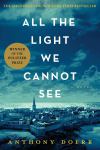
All
the Light We Cannot See
by Anthony Doerr
An
Amazon Best Book of the Month, May 2014: Does the world need
yet another novel about WWII? It does when the novel is as
inventive and beautiful as this one by Anthony Doerr. In fact,
All the Light We Cannot See--while set mostly in Germany and
France before and during the war--is not really a “war
novel”. Yes, there is fear and fighting and disappearance
and death, but the author’s focus is on the interior
lives of his two characters. Marie Laure is a blind 14-year-old
French girl who flees to the countryside when her father disappears
from Nazi-occupied Paris. Werner is a gadget-obsessed German
orphan whose skills admit him to a brutal branch of Hitler
Youth. Never mind that their paths don’t cross until
very late in the novel, this is not a book you read for plot
(although there is a wonderful, mysterious subplot about a
stolen gem). This is a book you read for the beauty of Doerr’s
writing-- “Abyss in her gut, desert in her throat, Marie-Laure
takes one of the cans of food…”--and for the way
he understands and cherishes the magical obsessions of childhood.
Marie Laure and Werner are never quaint or twee. Instead they
are powerful examples of the way average people in trying
times must decide daily between morality and survival. --Sara
Nelson
SOURCE:
Copyright © Amazon.com. All rights reserved.
|
|
July
11, 2017

Dandelion
Wine
by Ray Bradbury
World-renowned
fantasist Ray Bradbury has on several occasions stepped outside
the arenas of horror, fantasy, and science fiction. An unabashed
romantic, his first novel in 1957 was basically a love letter
to his childhood. (For those who want to undertake an even
more evocative look at the dark side of youth, five years
later the author would write the chilling classic Something
Wicked This Way Comes.)
Dandelion
Wine takes us into the summer of 1928, and to all the wondrous
and magical events in the life of a 12-year-old Midwestern
boy named Douglas Spaulding. This tender, openly affectionate
story of a young man's voyage of discovery is certainly more
mainstream than exotic. No walking dead or spaceships to Mars
here. Yet those who wish to experience the unique magic of
early Bradbury as a prose stylist should find Dandelion Wine
most refreshing. --Stanley Wiater
SOURCE:
Copyright © Amazon.com. All rights reserved.
|
|
August
1, 2017
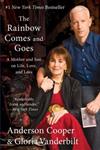
The
Rainbow Comes and Goes
by Anderson Cooper and Gloria Vanderbilt
|
|
September
5, 2017

The
Amazing Adventures of Kavalier & Clay
by Michael Chabon
Like
the comic books that animate and inspire it, The Amazing Adventures
of Kavalier & Clay is both larger than life and of it
too. Complete with golems and magic and miraculous escapes
and evil nemeses and even hand-to-hand Antarctic battle, it
pursues the most important questions of love and war, dreams
and art, across pages brimming with longing and hope. Samuel
Klayman--self-described little man, city boy, and Jew--first
meets Josef Kavalier when his mother shoves him aside in his
own bed, telling him to make room for their cousin, a refugee
from Nazi-occupied Prague. It's the beginning, however unlikely,
of a beautiful friendship. In short order, Sam's talent for
pulp plotting meets Joe's faultless, academy-trained line,
and a comic-book superhero is born. A sort of lantern-jawed
equalizer clad in dark blue long underwear, the Escapist "roams
the globe, performing amazing feats and coming to the aid
of those who languish in tyranny's chains!" Before they
know it, Kavalier and Clay (as Sam Klayman has come to be
known) find themselves at the epicenter of comics' golden
age.
SOURCE:
Copyright © Amazon.com. All rights reserved.
|
|
October
3, 2017
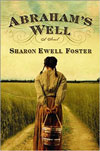
Abraham's
Well
by Sharon Ewell Foster
*Starred
Review* Foster drops back to 1838 to tell the story of black
Cherokees forced along the Trail of Tears. Her young heroine,
Armentia, lives an idyllic life in North Carolina, but greedy
whites scheme for the land and bring about the loathsome Indian
Removal Act. Armentia watches as her brother is dragged into
slavery, and then as most of her tribe, the Deer Clan, dies
on the trail. Nor does Oklahoma turn out to be paradise, with
Cherokees preying on Cherokees and Armentia sold into slavery.
This is simply told and moving, Foster's best work since her
groundbreaking first novel, Passing by Samaria (2000).
SOURCE:
John Mort, Copyright © American Library Association.
All rights reserved
|
|
November
7, 2017
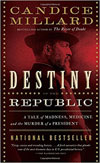
Destiny
of the Republic
by Candice Millard
"Crisp,
concise and revealing history. . . . A fresh narrative that
plumbs some of the most dramatic days in U.S. presidential
history."
—The Washington Post
“A
spirited tale that intertwines murder, politics and medical
mystery. . . . Candice Millard leaves us feeling that Garfield's
assassination deprived the nation not only of a remarkably
humble and intellectually gifted man but one who perhaps bore
the seeds of greatness . . . splendidly drawn portraits. .
. . Alexander Graham Bell makes a bravura appearance.”
—The Wall Street Journal
"Fascinating.
. . . Gripping. . . . Stunning. . . . The haunting tale of
how a man who never meant to seek the presidency found himself
swept into the White House. . . . Millard shows the Garfield
legacy to be much more important than most of her readers
knew it to be."
—The New York Times
"Destiny
of the Republic displays Millard's energetic writing and rare
ability to effortlessly educate the listener."
—USA Today
|
|
December
5, 2017
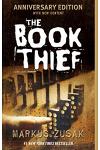
The Book Thief
by Markus Zusak
Starred
Review. Grade 9 Up–Zusak has created a work that deserves
the attention of sophisticated teen and adult readers. Death
himself narrates the World War II-era story of Liesel Meminger
from the time she is taken, at age nine, to live in Molching,
Germany, with a foster family in a working-class neighborhood
of tough kids, acid-tongued mothers, and loving fathers who
earn their living by the work of their hands. The child arrives
having just stolen her first book–although she has not
yet learned how to read–and her foster father uses it,
The Gravediggers Handbook, to lull her to sleep when shes
roused by regular nightmares about her younger brothers death.
Across the ensuing years of the late 1930s and into the 1940s,
Liesel collects more stolen books as well as a peculiar set
of friends: the boy Rudy, the Jewish refugee Max, the mayors
reclusive wife (who has a whole library from which she allows
Liesel to steal), and especially her foster parents. Zusak
not only creates a mesmerizing and original story but also
writes with poetic syntax, causing readers to deliberate over
phrases and lines, even as the action impels them forward.
Death is not a sentimental storyteller, but he does attend
to an array of satisfying details, giving Liesels story all
the nuances of chance, folly, and fulfilled expectation that
it deserves. An extraordinary narrative.–Francisca Goldsmith,
Berkeley Public Library, CA
SOURCE:
Copyright © Reed Business Information, a division of
Reed Elsevier Inc. All rights reserved
|
|













